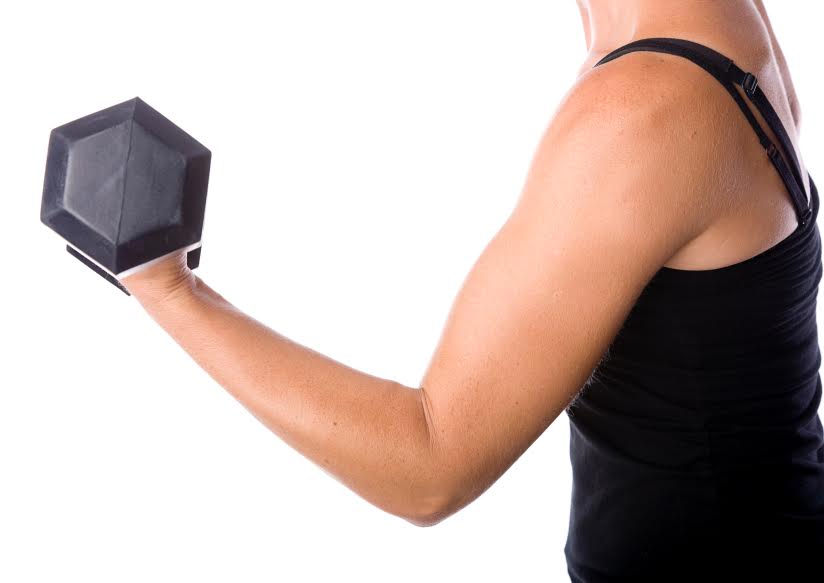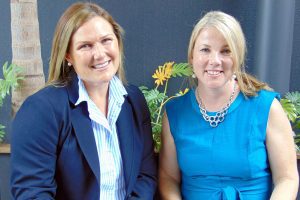Think heavy weightlifting is just for young, male gym junkies? Think again.
New research being conducted by The Bone Clinic and Griffith University is proving weightlifting is not only safe for men and women over 60, but also one of the best ways to prevent and treat osteoporosis.
This revelation was announced at the Clinic – a clinic focusing on the prevention and treatment of osteoporosis through exercise. Before this, it was thought that low-intensity, low-impact activities like walking were the best way to look after your bones if you had osteoporosis or weakened bones. Now, women in their 60s and 70s taking part in the research trial at Griffith University have proven the exact opposite to be true.
Associate Professor Belinda Beck, who is behind the Griffith University study and co-founder of The Bone Clinic, says the results have surprised even her – and she’s been conducting research in the field for more than 25 years.
“This is such a huge development for the bone health of seniors and those with osteoporosis,” Associate Professor Beck says. “There was a fear that asking someone with diminished bone density to lift a heavy weight would result in injury or fracture – but until now, no one had actually tested this to see if it was true.
“Using supervised high-intensity, progressive resistance training, we’ve proven we can build bone mass, muscle strength, and markedly improve physical function for those with osteoporosis,” she says.

“We’re also seeing women with curves in their upper spine, known as a Dowager’s Hump or, more technically, hyper-kyphosis, reducing the curve and regaining height because of improved posture.
“We have women in their 60s who can effortlessly lift 40-60kg and do chin-ups and even a 74-year-old who can lift her bodyweight.”
A critical benefit of this style of exercise is the fact that it builds muscle which improves strength and balance, both of which help to prevent falls.
So how can you bring some of the learnings from this scientific research into your own, everyday life? Meet Certified Olympic weightlifting coach, Lisa Weis, who co-founded The Bone Clinic.
She was the instigator of the research after training women over 50 who started to return improvements on their annual bone density scans.
“The most important lesson here is that you’re never too old to lift weights,” she says.
“The key is that the weights need to be heavy. There is no point doing 50 repetitions with a light weight as that won’t have the desired result. It’s all about loading the weight up and doing fewer repetitions.
“This is something that needs to be achieved gradually. We usually start people with a bar only, no weights – the first thing is to get the technique right. You can then slowly progress by adding more weight.
“The other thing to remember when exercising is to always stand on two feet. Bone needs to feel the effect of gravity working through the whole body. So if you’re heading to the gym, avoid machines that have you lifting weights in a seated position as you’ll benefit more if you stand.
“You only need to be doing two weight sessions per week for it to be effective for your bones, as long as it is the right kind of exercise. I encourage people to still continue doing other physical activities they enjoy as well, be it yoga, dancing or walking. While it might not be building bone, there are other benefits of keeping variety in your exercise regime.”
Lisa also sees great value in building up core muscles and practicing balance exercises.
“If you’re strong and have good balance, the chances of falling are reduced and, if you do fall, stronger bones mean you are less likely to fracture.”
Bone-boosting Tips
Lisa provides the following practical ways that you can incorporate bone-boosting and strength and balance-building exercise into your daily life:
You should do two high-intensity resistance weight-training sessions per week. An expert must supervise these so you always use correct technique and progress the weight safely.
While you’re brushing your teeth in the morning, stomp your feet. Do at least four stomps on each foot with enough pressure to crush a can. The impact this creates through your legs up into your hips is good for bone.
Find a straight line on the ground around 6m long, or place a piece of tape down. Walk along the line heel-to-toe. Test how many times you can do this without losing your balance.
Stand heel-to-toe a few metres from a wall. Throw a ball at the wall and catch it, maintaining that narrow stance. Be careful to avoid falling as you learn. You should do it next to a bench or railing so you can steady yourself until you get the hang of it.
Always practice a proper squat, whether you’re picking something up off the ground or lifting the grandkids. A proper squat involves bending from the hips first and then the knees follow. Keep your knees in alignment with your feet (don’t let them collapse into the midline) and your head and chest up.
Offset your core. Another great way to train every now and then is to hold mismatched weights in either hand. So taking an overhead press as an example, you could hold a heavier weight in one hand and a lighter in the other. This makes your core work a little harder on one side. Make sure you swap the weights over to ensure the other side of the body is also worked.
Sue Salta – Super Gran
Sue has become somewhat of a ‘poster girl’ for The Bone Clinic. When she first started training with Lisa, she had a noticeable curve in her upper spine, which has now improved significantly through regular and progressive supervised weight training.
She’s transformed from being “not a gym person” to regularly lifting 40-50kg and has a personal best of 72kg.
“It certainly makes you feel different when running up the stairs with the groceries,” Sue says.
“I can now easily pick up my grandkids, which I just couldn’t confidently do before.
“I can safely squat down to the floor, which I didn’t think was even possible anymore. I marvel at how flexible the grandkids are and thought I’d never regain that sort of flexibility – but I’ve surprised myself.
“My upper body strength has hugely improved and no more wobbly arms for me.”
 For more information and tips, head to: www.theboneclinic.com.au
For more information and tips, head to: www.theboneclinic.com.au





















Add Comment